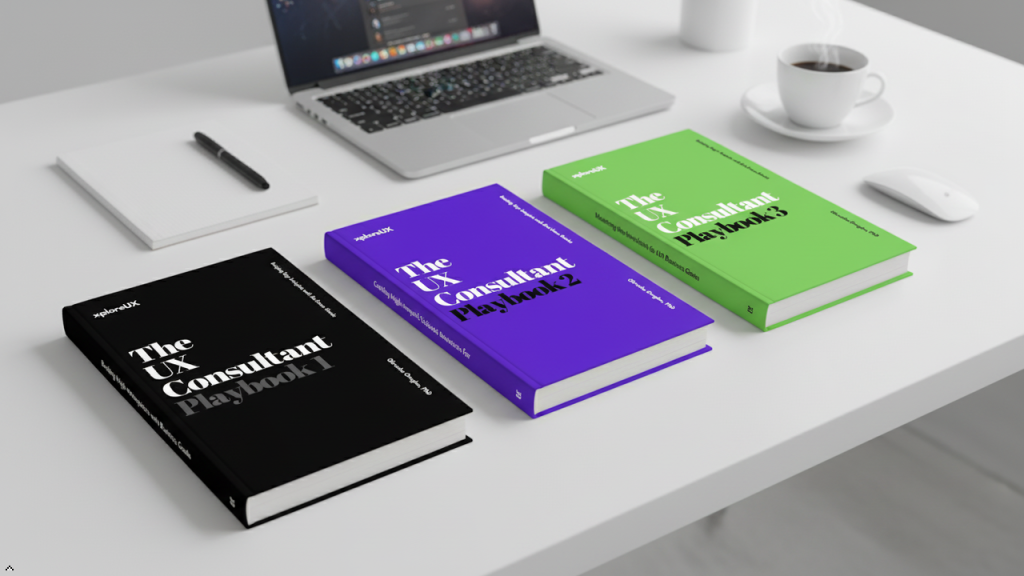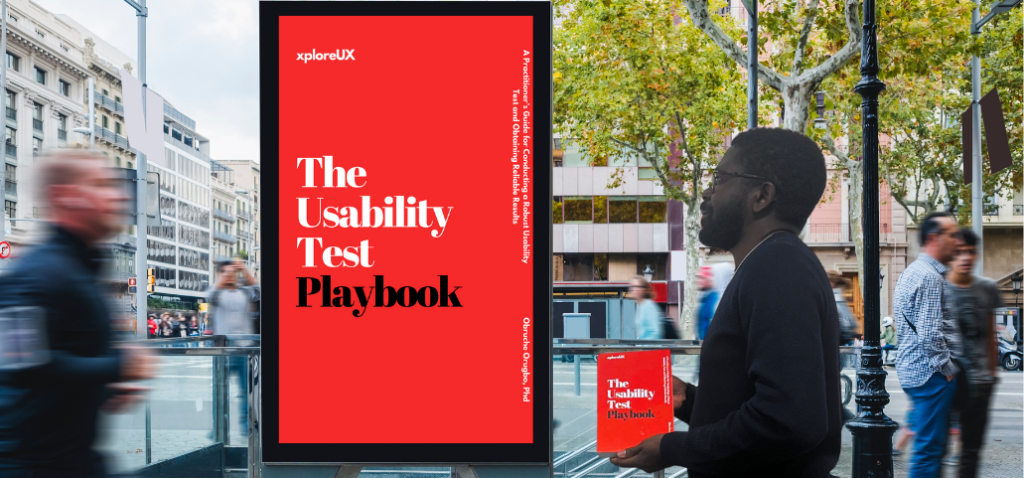
User engagement is the cornerstone of successful product design. Crafting an experience that captivates users not only boosts satisfaction but also drives retention and advocacy. As a UX consultant, I’ve seen firsthand how strategic design choices can transform user interaction.
This article will explore key principles to enhance user engagement, tailored for SEO-friendly content. To effectively apply these principles, it’s essential to grasp what user engagement truly entails.
User engagement is a multifaceted concept that encompasses the emotional and psychological investment users make when interacting with a product or service. This engagement is not merely about the frequency or duration of use; it’s about the depth of connection and satisfaction users feel. High engagement often translates into users returning regularly, spending more time, and ultimately, becoming loyal advocates of the product. It reflects how well the product meets their needs, solves their problems, and delights them through its features and usability.
To foster such engagement, designers must focus on creating experiences that are intuitive, enjoyable, and valuable. Intuitive design means minimizing the learning curve, making the product easy to navigate and use from the first interaction.
Pleasant experiences are crafted by incorporating aesthetically pleasing visuals, smooth interactions, and meaningful content that resonates with users. Lastly, the product must provide value by addressing user needs effectively, offering solutions that enhance their lives, or streamlining their workflows.
Achieving high user engagement requires a deep understanding of the target audience, regular feedback collection, and continuous iteration based on user insights. By prioritizing these elements, designers can build products that not only attract users but also retain them by fostering a strong, lasting connection. This user-focused approach is at the heart of User-Centered Design (UCD).
User-centered design (UCD) is a foundational approach to creating engaging experiences. UCD revolves around the principle of designing with a deep focus on the users’ needs, behaviors, and pain points, ensuring that every aspect of the product aligns with their expectations and preferences.
This approach involves a cyclical process of research, design, testing, and iteration.
To effectively implement UCD, designers start by developing user personas—detailed, semi-fictional characters based on real user data. These personas help teams understand various user demographics, goals, challenges, and preferences. They act as a guide for making empathetic design decisions that cater to specific user needs.
Journey mapping is another crucial technique where designers outline the steps users take to achieve a particular goal within the product. This process helps identify pain points and opportunities for enhancement at each stage of the user experience, from discovery to action and post-use reflection. By mapping the user journey, designers can pinpoint moments that require improvement, ensuring a smooth and satisfying experience.
Usability testing is the cornerstone of UCD, providing direct feedback from users as they interact with the product. Conducting usability tests, whether through prototypes or live products, reveals real-world challenges users face. This iterative testing process highlights areas where the design may falter, allowing designers to make informed adjustments before and after the product launch.
Ultimately, UCD fosters a design environment where user satisfaction drives decision-making. This empathy-driven approach not only enhances usability but also fosters deeper engagement by making users feel understood and valued. By continually aligning design solutions with real user needs and behaviors, UCD helps create products that resonate deeply and provide meaningful experiences.
One key aspect of implementing UCD principles effectively is crafting intuitive navigation.
Intuitive navigation is the backbone of user engagement, serving as the primary touchpoint through which users interact with your product. Effective navigation design ensures that users can effortlessly locate the information and features they seek, thereby reducing friction and enhancing the overall user experience. To craft intuitive navigation, designers must consider several critical factors: clarity, consistency, familiarity, and logical organization.
Clarity and Simplicity: The foremost principle in navigation design is clarity. Navigation elements should be clearly labeled to communicate their purpose without ambiguity. Use straightforward language that resonates with your target audience, avoiding jargon or overly technical terms that might confuse users. For example, instead of using “Dashboard” for a user’s personal area, consider “My Account” if it better aligns with user expectations. Additionally, keep the design simple; a cluttered navigation bar with too many options can overwhelm users and obscure the path to their desired destination.
Consistency Across Platforms: Consistency in navigation is crucial for providing a seamless user experience across different platforms and devices. Maintain uniformity in navigation elements, including menus, icons, and terminology, across your website, mobile app, and any other interfaces. This helps users transfer their understanding from one platform to another, reducing the learning curve and preventing frustration. For instance, if you use a hamburger menu on mobile, ensure its presence and function remain consistent on other device formats to avoid confusing the user.
Familiarity in Design: Leveraging familiar design patterns can significantly enhance the intuitiveness of your navigation. Users have grown accustomed to certain navigation conventions through repeated use across different websites and applications. Incorporate commonly recognized icons (such as the magnifying glass for search, the house for home, or the shopping cart for checkout) and standard placement of elements (such as the main menu at the top or side of the page). This familiarity allows users to navigate with confidence, minimizing the need for them to learn a new system.
Logical Grouping and Hierarchical Structure: Organizing navigation elements logically and hierarchically helps users understand the relationship between different sections and pages. Group related items together under clear, descriptive headings to aid users in finding their way. For instance, categorize product pages under “Products” and support resources under “Help” or “Support.” Implement a hierarchical structure that guides users from broad categories to more specific content. This structure should be reflected in both the visual layout and the underlying information architecture, creating an intuitive pathway for users.
Use of Visual Cues: Visual cues such as icons, color coding, and spacing can enhance navigation intuitiveness. Icons can provide quick, recognizable signals for different sections, while colors can differentiate categories or indicate interactive elements. Adequate spacing between navigation items helps prevent accidental clicks and improves readability. Additionally, use hover effects or dropdown menus to reveal secondary options, indicating to users that more content is available without cluttering the main navigation.
Breadcrumb Navigation: Implementing breadcrumb navigation can be particularly useful for complex websites with deep hierarchies. Breadcrumbs provide a trail of links back to the homepage or previous sections, helping users understand their current location and navigate back easily. This feature is especially valuable in e-commerce sites or content-heavy platforms, where users may need to retrace their steps.
Mobile Navigation Considerations: Designing navigation for mobile requires special considerations due to the smaller screen size and touch-based interactions. Use responsive design techniques to ensure the navigation adapts to different screen sizes. Implement mobile-specific navigation patterns such as the hamburger menu or bottom navigation bar, which are more accessible for thumb use. Simplify the menu options and consider incorporating gestures (like swipes) for navigation to provide a more fluid and intuitive mobile experience.
Testing and Iteration: Continuous testing and iteration are essential to refining navigation. Conduct usability testing to observe how real users interact with your navigation system. Identify pain points or areas where users struggle and make iterative improvements. Utilize tools like heatmaps to track where users click and how they move through your site, providing insights into the effectiveness of your navigation design. Regularly update and test your navigation to adapt to evolving user needs and behaviors.
Prioritizing accessibility during these iterations ensures that your navigation system is not only user-friendly but also inclusive.
Prioritising accessibility in design is not just about compliance; it’s about creating an inclusive experience where every user, regardless of abilities, can fully engage with your product. Adhering to Web Content Accessibility Guidelines (WCAG) is crucial. This involves providing alternative text for images, ensuring keyboard navigability for users who cannot use a mouse, and offering transcripts for multimedia content such as videos or podcasts. These practices not only broaden your audience by accommodating people with disabilities but also reflect a commitment to social responsibility.
Implementing alternative text for images is fundamental in accessibility. It allows screen readers to describe images to visually impaired users who rely on auditory cues to navigate the web. This ensures that everyone, regardless of visual capability, can access and understand the content presented.
Keyboard navigability is another critical aspect of accessibility. Many users, including those with motor disabilities, rely on keyboard shortcuts to navigate websites and applications. Ensuring all interactive elements can be accessed and operated via keyboard input ensures a seamless experience for these users.
Providing transcripts for multimedia content serves multiple purposes. It benefits users who are deaf or hard of hearing by providing them with text-based alternatives to audio content. Additionally, it benefits users who prefer to consume content in environments where audio may not be feasible or preferred, such as in noisy environments or quiet settings.
By prioritising accessibility in your design process, you not only enhance usability for users with disabilities but also improve the overall user experience for all users. Accessible design often leads to clearer and more intuitive interfaces, which can benefit everyone, regardless of their abilities.
Moreover, focusing on accessibility aligns with ethical considerations and legal requirements in many regions. It demonstrates a commitment to inclusivity and social responsibility, fostering a positive reputation for your brand and potentially reaching a broader audience who values these principles. To achieve this, engaging visual design plays a crucial role.
Visual design is crucial in capturing users’ attention and fostering a positive first impression. Aesthetically pleasing interfaces not only attract users but also enhance their overall experience. To achieve this, designers should employ a cohesive color palette that reflects the brand’s identity while being visually appealing. Balanced layouts ensure that information is presented in a clear and organized manner, reducing cognitive load and making navigation intuitive.
High-quality images and graphics play a pivotal role in visual storytelling, helping to convey messages effectively. Incorporating visual hierarchy guides users’ attention to key elements such as calls-to-action or important information, ensuring that users can easily navigate through the interface. By focusing on clarity and aesthetics, designers can create interfaces that not only look good but also function seamlessly, enhancing usability and engagement.
To further elevate the user experience, incorporating interactive elements is essential. Interactive elements are instrumental in creating a dynamic and engaging user experience. Buttons, forms, and animations should be designed with usability in mind—buttons should be easily clickable, forms intuitive and straightforward, and animations purposeful rather than distracting. Interactive elements add depth to user interactions, making them more responsive and engaging.
For instance, interactive forms can use conditional logic to streamline user input, reducing frustration and errors. Animated transitions can provide visual feedback, indicating changes in state or guiding users through processes. By balancing interactivity with usability, designers can create interfaces that encourage exploration and keep users engaged throughout their journey.
Equally important in this engagement is the content itself, which shapes the user’s experience on a deeper level.
Creating compelling content is critical for engaging users and shaping their experience with a product. High-quality, relevant content directly addressing user needs and interests enhances user satisfaction and interaction. Integrating storytelling techniques elevates content by making it relatable and memorable, fostering a deeper emotional connection with the audience. Stories resonate because they weave information into a narrative, transforming abstract concepts into vivid, engaging experiences.
Regular updates to content are essential, ensuring it remains current, relevant, and capable of attracting repeat visits. This ongoing freshness signals to users that the platform is active and invested in delivering the latest and most pertinent information. Content should be a blend of informative, entertaining, and valuable elements, tailored to what users find useful or enjoyable.
By consistently focusing on the resonance of content, designers can create a sense of community and belonging among users, driving long-term engagement and loyalty. This approach not only meets immediate user needs but also builds a sustainable relationship based on trust and ongoing value, making users more likely to return and engage with the product regularly. Ultimately, compelling content becomes a powerful tool for cultivating a dedicated and active user base.
The next step is leveraging personalisation.
Leveraging personalisation involves creating tailored user experiences by analyzing individual preferences, behaviors, and historical data. This approach utilizes insights like user demographics, browsing patterns, and interaction history to offer customised content, recommendations, and alerts. For example, e-commerce platforms might suggest products based on past purchases, while streaming services propose shows aligned with users’ viewing habits. Such personalization enhances user engagement and satisfaction by making interactions more relevant and intuitive.
Beyond mere customization, effective personalisation anticipates needs, providing timely, contextually relevant information that feels uniquely crafted for each user. This dynamic adjustment fosters stronger connections, encouraging longer interactions and increasing the likelihood of user retention. Personalisation transforms generic interactions into meaningful engagements, making users feel recognised and understood, which is essential for building loyalty and improving overall user experience.
Performance optimisation is critical for user engagement, particularly on the web where slow load times can deter users. Optimising images, leveraging browser caching, and minimising JavaScript are essential techniques to improve load speeds. Regular performance testing helps identify and rectify issues, ensuring a smooth and efficient user experience.
Fast load times not only reduce bounce rates but also contribute to overall user satisfaction. Mobile optimization is equally important, given the increasing use of smartphones and tablets. Responsive design ensures that websites perform seamlessly across all devices, enhancing accessibility and engagement for users on the go.
Once you’ve ensured a fast and user-friendly experience, leverage the power of social proof.
Integrating social proof effectively builds credibility and trust, crucial elements for engaging users with a product or service. This strategy involves prominently displaying user reviews, testimonials, and social media shares to provide authentic validation from existing customers. Such endorsements serve as powerful motivators, encouraging potential users to engage and interact with the product, reassured by others’ positive experiences.
Strategically implemented social sharing buttons also facilitate easy content distribution, expanding the product’s reach and driving traffic through user-generated endorsements. These endorsements can include sharing reviews, experiences, or achievements on platforms like Facebook, Twitter, and LinkedIn, amplifying the product’s visibility through personal networks.
Effective social proof goes beyond mere statistics. It focuses on highlighting genuine, relatable experiences that resonate with potential users, creating a more personal and compelling narrative. For instance, detailed testimonials or case studies can showcase how a product solved real-world problems, making the benefits more tangible.
By leveraging social proof in this manner, designers can significantly enhance the perceived value and credibility of their offerings. This approach not only attracts new users but also boosts conversion rates, as potential customers feel more confident in making a purchase or engaging with the product based on trusted peer recommendations. However, to ensure long-term success, businesses must go beyond initial impressions and actively seek user feedback.
Encouraging user feedback is crucial for fostering an adaptive and user-centric approach to product development and service enhancement. Feedback loops enable organizations to capture the pulse of user satisfaction and identify areas for improvement. By offering diverse, easy-to-use channels—such as surveys, feedback forms, and interactive comment sections—businesses signal a genuine interest in user perspectives. This inclusive approach allows users to voice their experiences, expectations, and concerns, thus promoting a collaborative environment where user input directly influences product trajectory.
Proactively acting on feedback is integral to building a responsive and evolving service model. It facilitates the prompt resolution of issues, enhancing user satisfaction and loyalty. Furthermore, incorporating user suggestions into product development fosters a cycle of continuous improvement that aligns closely with user needs and preferences.
Communicating transparently about the actions taken in response to feedback is equally important. It demonstrates accountability and reinforces trust, as users see their input driving tangible changes. Regular updates on how feedback has informed decisions show that the organization values user contributions, leading to deeper engagement and a stronger connection with the user base. Ultimately, effective feedback mechanisms not only improve products but also cultivate a community where users feel heard and valued.
By tapping into users’ motivations, through feedback, gamification can also encourage desired behaviors and fosters a sense of achievement and progression.
Gamification employs game-like elements such as points, badges, leaderboards, and challenges to enhance user engagement. By tapping into users’ intrinsic motivations, gamification encourages desired behaviors and fosters a sense of achievement and progression.
Designing gamification elements that align with the product’s goals ensures meaningful engagement. For example, reward systems can incentivize users to complete tasks or participate actively within a community. By integrating gamification thoughtfully, designers can transform routine interactions into enjoyable experiences that keep users motivated and engaged over time. Similarly, optimising the user experience for mobile devices is crucial.
Mobile optimization is crucial due to the surging use of smartphones and tablets for accessing online content. Mobile optimization ensures that websites and applications provide a seamless and intuitive user experience on any device, regardless of screen size. A responsive design adapts layout and functionality dynamically, maintaining aesthetics and usability from large desktops to small handheld devices.
Key elements of mobile optimization include simplifying navigation to avoid complex menus that can be cumbersome on smaller screens. Enlarging touch targets, such as buttons and links, minimizes frustration from accidental clicks and improves ease of use. Content must also be tailored for mobile, with concise text, readable fonts, and images that load efficiently without compromising quality.
Effective mobile interfaces significantly boost accessibility and user satisfaction by enabling quick, effortless interactions, critical for users on the go. Prioritising mobile optimisation captures and retains a diverse audience, fostering deeper engagement and loyalty. Enhanced mobile performance not only meets the expectations of contemporary users but also improves search engine rankings, as algorithms increasingly favor mobile-friendly sites. Ultimately, focusing on mobile optimization aligns digital products with modern usage patterns, driving growth and success in a mobile-centric world.
To achieve this mobile-centric design, analyzing user data is crucial.
Data-driven design is crucial for creating effective user experiences. By employing analytics tools, designers can monitor key performance indicators (KPIs) such as bounce rates, session durations, and conversion rates. These metrics provide valuable insights into how users interact with digital products, highlighting what works and what doesn’t. For example, high bounce rates might indicate that content isn’t engaging or relevant, prompting a redesign of landing pages or content strategy.
Analyzing user data reveals patterns and trends, allowing designers to pinpoint friction points or identify popular content areas. This deeper understanding of user journeys enables targeted enhancements that improve usability and engagement. For instance, if data shows users dropping off at a specific stage in the funnel, designers can investigate and optimize that part of the journey, such as simplifying forms or clarifying navigation paths.
Regular analysis of user behavior data facilitates an iterative design process. By continuously assessing and refining strategies based on real-world usage, designers can enhance user satisfaction and drive better outcomes. This approach not only improves the immediate user experience but also adapts the product to evolving user needs, ensuring sustained engagement and effectiveness in a competitive market. One key tool for achieving this continuous improvement is A/B testing.
A/B testing allows designers to compare different design variations and identify which elements resonate best with users. Testing variables such as headlines, colors, and call-to-action buttons provides empirical evidence to inform design decisions.
Regular A/B testing fosters a culture of continuous improvement, enabling designers to optimize engagement metrics systematically. By iterating on successful design elements and discarding ineffective ones, designers can refine the user experience iteratively, ultimately driving higher engagement and conversion rates.
By combining A/B testing for optimization with a strong user community, you can create a powerful strategy to drive user engagement and conversions.
Building a community around a product cultivates a sense of belonging and encourages ongoing engagement among users. Implementing forums, discussion boards, and social media groups provides platforms for users to connect, share experiences, and support one another.
Active community participation fosters loyalty and advocacy, as users become invested in the product’s success. Designers can facilitate community engagement by promoting meaningful interactions, fostering collaboration, and listening to community feedback. By nurturing a vibrant community, designers can sustain long-term engagement and cultivate a loyal user base.
Incorporating these strategies into your design approach can significantly enhance user engagement and satisfaction. By focusing on visual design, interactive elements, compelling content, personalization, performance optimization, social proof, user feedback, gamification, mobile optimization, data analysis, A/B testing, and community building, designers can create holistic experiences that resonate with users and drive long-term success. Each element contributes to a user-centric approach that prioritizes user needs, behaviors, and preferences, ultimately fostering deeper engagement and building lasting relationships with your audience.
Designing for user engagement is a multifaceted challenge that requires a deep understanding of your users and a commitment to continuous improvement. By incorporating user-centered design principles, intuitive navigation, accessibility, compelling content, personalization, fast load times, social proof, feedback mechanisms, gamification, mobile optimization, data analysis, A/B testing, and community building, you can create a highly engaging user experience.
Remember, the key to successful user engagement design lies in empathy and iteration. Continuously seek user feedback, analyze data, and refine your design to meet evolving user needs. With a thoughtful and strategic approach, you can create products that not only attract but also retain and delight users.
By prioritizing user engagement, you’re not just enhancing the user experience—you’re building a foundation for lasting success.
1. What common misconceptions do UX consultants often avoid discussing regarding user engagement?
Answer: UX consultants may not always emphasize that user engagement isn’t just about metrics like clicks or time on site. True engagement involves creating meaningful interactions and emotional connections with users, often overlooked in favor of easily quantifiable metrics.
2. How do UX consultants typically measure user engagement, and what might they leave out?
Answer: UX consultants often measure engagement through quantitative metrics such as page views, session duration, and click-through rates. However, they may not fully disclose the importance of qualitative insights, like user feedback and emotional responses, which provide a deeper understanding of user behavior and preferences.
3. Why might UX consultants downplay the role of storytelling in user engagement?
Answer: Storytelling can be seen as a soft skill, less quantifiable than other design aspects. UX consultants might downplay it because it’s challenging to measure its direct impact on engagement through traditional metrics, even though it significantly enhances user connection and retention.
4. What hidden challenges in maintaining long-term user engagement are often not discussed?
Answer: Sustaining long-term engagement requires continuous updates and improvements based on evolving user needs and preferences. UX consultants might not fully disclose the extensive ongoing effort needed to keep content fresh and relevant, which involves regular user research and feedback integration.
5. How can the pursuit of high engagement metrics mislead user experience strategies?
Answer: Focusing solely on high engagement metrics can lead to short-term tactics that boost numbers but don’t genuinely improve user experience. UX consultants may not always reveal that such an approach can result in superficial engagement, where users interact frequently but without meaningful satisfaction or loyalty.





3 comments